Combat ships. Cruisers. Good result of a strange experiment
Another question is, what did they set the goal of these experiments?
And this is a very difficult question. Hiragi himself could have answered it, but alas, since 1943 he has not been able to do it.
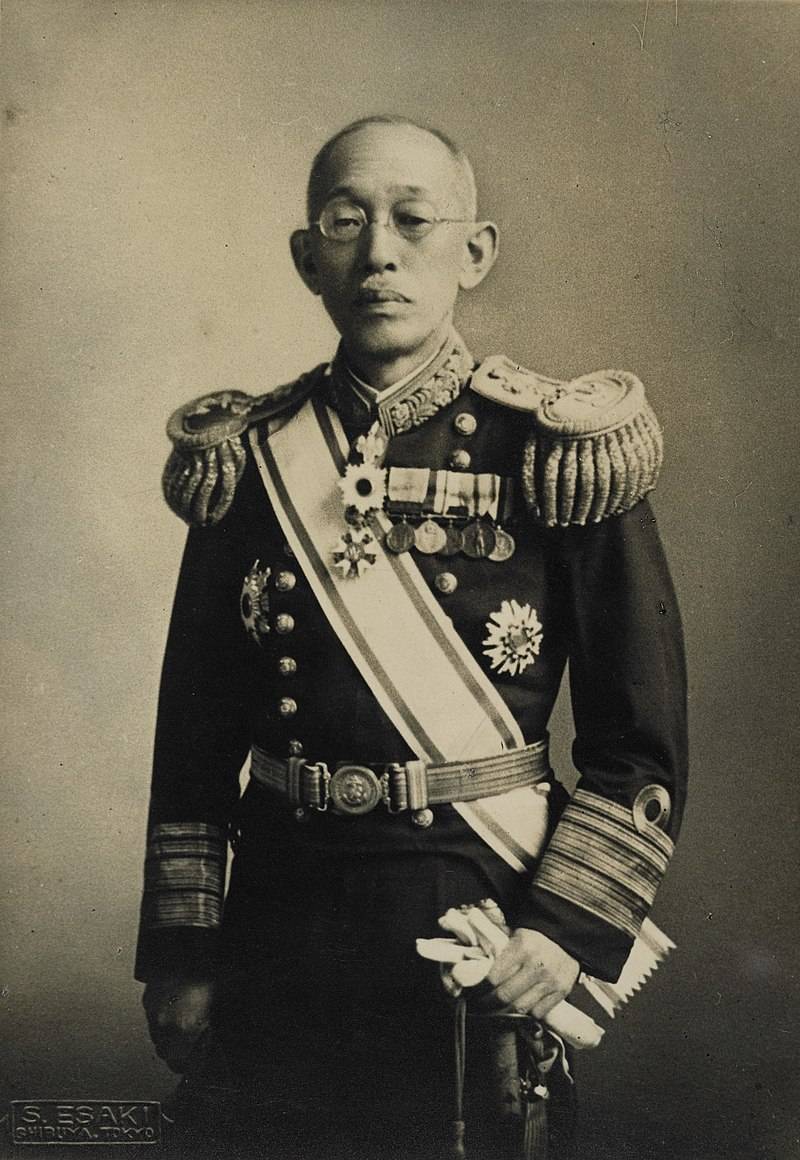
Yuzuru Hiragi
In general, of course, many sources say that Yubari was built as a kind of test bench for new generation power plants.
It would be possible to believe, if not the fact that the cruiser is slightly different from the plane or tank... And replacing the engine in it is a very peculiar task. It seems to me that the matter is somewhat in other innovations, but let's go in order.
Indeed, what new power plants can be tested on a cruiser? Changing them back and forth, or what else? Most likely, it was a problem of translation from Japanese. Of course, no one in Japan was going to test any power plants in the plural, there the sick in the head survived very badly.
It was about a truly experimental (for Japan) ship - a light cruiser, naturally, oil-powered, with new weapons and new tasks. Let me remind you that this miracle was built in 1923. The First World War has just ended, and Japan took part in it, acting together with the ships of the Entente. That is, there was someone to look at and from someone to learn from.
It should be noted that the Japanese helped the French, who were very heavily loaded by the war, by building destroyers for them.
Accordingly, at the end of the war, the search for new ship formats, more efficient and modern, immediately began. Already in 1917, programs for the development of the Japanese Imperial Navy began to be adopted.
At first, MGSH (Marine General Staff) wanted to build three scouts with a displacement of 7200 tons and six very small cruisers with a displacement of 3500 tons. Then they decided not to experiment like that, but to build eight light cruisers of 5500 tons each. And the ninth decided to build one small light cruiser as a test.
In principle, the Japanese "small light cruiser" - if it is normally translated into European practice, then the leader of destroyers.
Since the construction of this new undercruiser was not a priority, they built it like this ... slowly. Procrastinating, "shifting to the right," and so on. It was named after the Ayase River, as was the case with all Japanese light cruisers.
However, they did not have time to build, in 1920 another revision of projects and priorities burst out. To the original eight cruisers of 5 tons, it was decided to add four scout scouts of 500 tons with a displacement. Well, the Japanese had such a fad, they must have reconnaissance squadrons.
Yuzuru Hiraga, head of the basic design bureau of the shipbuilding section of the Marine Technical Department (MTD), proposed another development path that would allow the creation and construction of more modern ships.
Hiragi's idea was simple and complex at the same time. Hiraga proposed to reduce the weight of the hull by including horizontal and vertical armor protection in its power set. And spend the released weight on something more necessary, weapons, fuel or something else.
The MGSH evaluated and allowed Hirage to conduct such an experiment ... with the unfinished Ayase. And the process started, on December 23, 1921 "Ayase" was renamed into "Yubari". It's hard to say why, but renamed.
According to the technical project, Yubari was supposed to develop the same speed as the cruiser with a displacement of 5 tons, that is, 500 knots, a cruising range of 35,5 miles at a speed of 5500 knots, be armed with six 14-mm guns and four torpedo tubes 140 mm.
And for all this, as many as 3 tons of displacement were generously allocated.
Hiragi and Fujimoto, who was in charge of the design bureau, gave their best, applying many innovations in the design of the new ship, the main of which was the conversion of boilers to liquid fuel. But in addition to the new boilers, there were new items such as the maximum combination of chimneys to reduce the number of pipes, the use of side and deck armor to increase the longitudinal strength of the hull, and the placement of armored chimney channels above the armored deck.
For "Yubari" undertook the full program: work on alteration began in June 1922, and on March 5, 1923 the cruiser was already launched. And he went to the test.
Tests showed that both Hiragi and Fujimoto's ship worked. The transshipment amounted to 419 tons or 14% of the displacement and amounted to 4 tons with 019/2 of the reserves on board. In general, a bit too much, the same "Kuma" had 3 versus 5 official.
Reservations.
The cruiser had an armored belt that protected the power plant. The length of the armor belt is 58,5 m with a width of 4,15 m and a thickness of 38 mm.
In the upper part of the armor belt docked with the armor deck, the thickness of which was equal to 25 mm.
The lower part of the chimney and air intakes were protected by 32 mm armor.
The superstructure was not booked. Only the spirit of bushido.
The turrets had a booking of 10 mm.
Power point.
The cruiser had 8 boilers similar to those used on the Minekadze-class destroyers (the destroyer had 4 boilers) and 3 turbo-gear units from Mitsubishi with a capacity of 19 hp. each. That is, a total of 300 hp.
The fuel supply consisted of 916 tons of fuel oil, which was stored in the double-bottom space, under the hold deck. The reserve was supposed to provide a range of 5000 miles, but the overload and increased fuel consumption reduced the range to 3 300 miles.
Problems arose here, because as the leader of the destroyers "Yubari" was of dubious value, since the same "Minekadze" had a range of 3 miles.
On sea trials on July 5, 1923 near the island of Kosikijima with a machine power of 62 liters. from. Yubari developed 336 knots. The decrease in speed relative to the contract at 34,786 was the result of overload.
Armament.
The main caliber of the Yubari consisted of six 140-mm Type 3 guns.
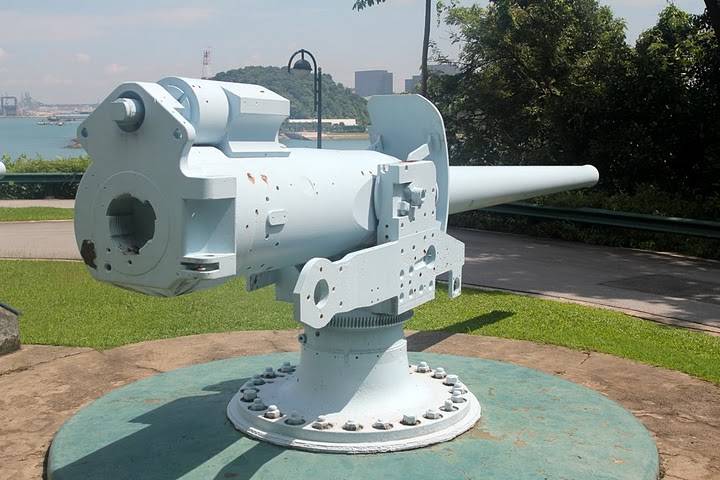
This is the main anti-mine weapon, which was installed on all ships from battleships (types "Ise", "Nagato", "Tosa", "Kii"), battle cruisers ("Amagi"), light cruisers ("Tenryu", "Kuma" , "Nagara", etc.), minelayers, aircraft carriers ("Hosho").
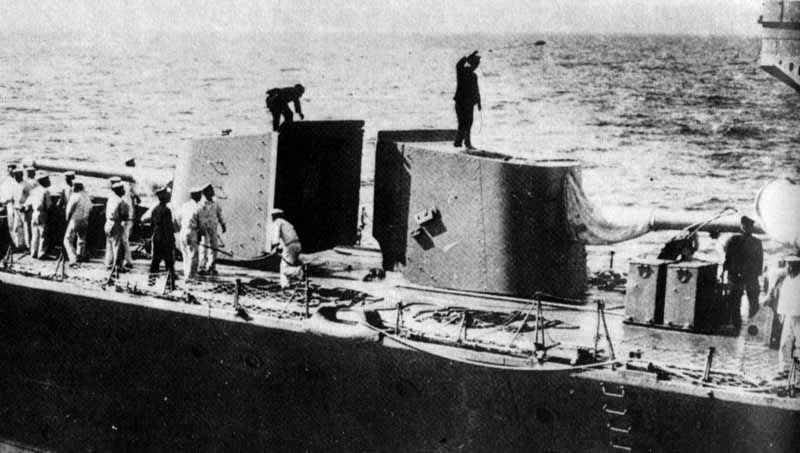
The weapons are not new, they were developed before the First World War, but they have not lost their relevance. Guns No. 1 and No. 4 with armored shields were located on the forecastle and in the stern. Paired closed (tower) installations No. 2 and No. 3 were located above them, on the bow and stern superstructures.
Placing all six guns linearly elevated in the center plane not only made it possible to use all of them in an onboard salvo, but also three each, if it was necessary to fire on the course or in the aft sector.
The ammunition was stored in cellars located at the extremities of the hold deck. They were lifted by electric lifts to the deck, and to the guns themselves - manually through the feed pipes.
The maximum firing range at an elevation angle of 35 ° reached 19,7 km. The rate of fire is up to 8 rounds per minute for twin turrets and up to 6 rounds for single guns.
Anti-aircraft weapons.
With anti-aircraft weapons, judging by modern standards, everything was bad on the Yubari. But for the 20s - quite. 76,2-mm anti-aircraft gun "Type 3" on the superstructure between the torpedo tubes and two 7,7 mm machine guns. In general, it was quite possible to fight off the airship.
Still on the ship, at the bow superstructure, there were two 47-mm signal cannons of the Yamauchi system.
Mine torpedo armament.
Two twin-tube torpedo tubes 610-mm "Type 8". Guided by electric motors, which was very progressive. Ammunition consisted of 8 "Type 8" steam-gas torpedoes. Torpedoes were stored in the central part of the hull, warheads in the cellar.
The TA guidance sector was small, only about 20 degrees on each side.
Mine weapons consisted of 48 mines, which were dropped using mine rails.
Crew.
The Yubari crew consisted of 340 people. The officers were located in cabins in the bow on the upper deck in the forecastle and on the lower deck. Non-commissioned officers were located in the cockpits in the central superstructure and on the upper and lower decks. The enlisted personnel lived in the quarters, six in the bow on the lower and hold decks, and three in the stern, on the lower deck.
The placement was competent, the crew was located close to the combat posts, however, there were problems with ventilation in the cockpits on the lower decks, since the lower row of windows had to be kept closed due to the threat of flooding.
The galley (for the entire crew) was located in the superstructure around the chimney, and in the stern, on the lower deck, there was a bathhouse for the crew.
Combat service.
The Yubari entered service on December 1, 1923. Despite the fact that already in 1924 the cruiser was put into reserve, she constantly made campaigns (including long-distance ones), mainly to the region of China. Until 1932, the Yubari was used as a training ship.
The cruiser received her baptism of fire while taking part in the First Shanghai Incident in 1932. Yubari suppressed Chinese coastal batteries.
Then there was a training service, several repairs and upgrades. For example, 7,7 mm machine guns were replaced with 13,2 mm twin mounts.
On December 3, 1941, the cruiser moved to Kwajalein. After Japan entered World War II, the Yubari, along with the cruisers Tenryu and Tatsuta and six destroyers, took part in the first attempt to capture Wake Island. The capture did not work, the Americans rested on the full program and artillery (a battery of 6 127-mm guns) and aviation (airfield and 12 attack aircraft) sank two Japanese destroyers, Hayate and Kisaragi.
The second attempt was more successful and the island was captured. Yubari also took part in the operation.
Further "Yubari" took part in several landing operations of the Japanese fleet. On March 10, 1942, planes from Yorktown tried to butcher the Yubari into a nut, but the cruiser fought back, although the hull was badly damaged. "Yubari" somehow reached Rabaul, after which it got up for a month for repairs.
After repairs, the cruiser operated from Rabaul, escorting transports carrying troops and cargo. Participated in the attempted capture of Port Moresby.
In August 1942, the ship took part in the Battle of Savo Island. "Yubari" did not receive any damage, although it took part in the battle more than actively. First, in almost complete darkness, the cruiser's torpedoes hit the heavy cruiser Vincennes with a torpedo. The 610-mm torpedo put the cruiser out of action, plus the Vincennes, which had lost its speed, became a target for the entire Japanese group of ships.
The second victim of the Yubari was the destroyer Ralph Talbot, which illuminated the Yubari with a searchlight and began to launch a torpedo attack. The Japanese achieved five hits on the Talbot, a fire broke out on the destroyer, the Americans abandoned torpedo launches and withdrew from the battle.
Taking part in the confrontation with the Americans in New Georgia, Yubari took part in various clashes as the leader of destroyers. On July 5, 1943, the cruiser was blown up by a Mk.12 magnetic mine. The ship received a hole in the port side, but the crew worked out the salvation conscientiously and the Yubari arrived in Rabaul on its own, where it began its initial repairs. Then I had to go to Japan, where I stood in Yokosuke for repairs until October.
On November 3, "Yubari" arrived in Rabaul, to the duty station, and the next day was knocked down by American bombers. On November 11, the Americans repeated the raid and the cruiser was again hit by nearby explosions. On November 24, the cruiser sustained damage to its hull from American bombs for the third time and was sent to Japan for repairs, towing the damaged destroyer Naganami.
And from December 1943 to March 1944, in addition to repairs, Yubari was significantly modernized.
Single guns # 1 and # 4 were dismantled. Instead of nose gun No. 1, the Type 10 Model E 120-mm anti-aircraft gun was installed.
Instead of the stern gun, a triple 25-mm anti-aircraft machine gun was installed, two of the same machine guns were installed on the sides of the mast. The total number of barrels of 25-mm machine guns was increased to 25 (3 x 3, 4 x 2, 8 x 1).
Instead of a searchlight, a radar was mounted at the superstructure rangefinder post to detect surface targets.
At the stern, they installed two bomb throwers for 6 depth charges each.
All these modifications made the ship heavier, so it was necessary to abandon spare torpedoes and shorten both masts. Nevertheless, the displacement still increased and amounted to 3 tons. The speed, of course, dropped to 780 knots, which was still not bad for a not very modern ship.
On April 25, 1944, the Yubari ended up in Palau, where, taking on board 365 soldiers and 50 tons of cargo, together with transport number 149 and two destroyers went to the island of Sonsorol. On the morning of April 27, cargo and resupply were delivered and the ships sailed back to Palau.
On the way of the convoy was the American submarine Bluegill, which fired 6 torpedoes at the Japanese ships. The range was about 2,5 km, it was difficult to miss.
At 10:04 Yubari was hit by a torpedo in the area of boiler room No. 1.
Boiler rooms # 1 and # 2 were flooded almost immediately, the cruiser lost speed and began to roll to starboard with a trim to the bow. At 10:11, a fire broke out in the fuel tanks.
The crew fought for the ship for almost a day, but to no avail. The water was coming, and at 10.15 am on April 27, the Yubari still sank just 35 miles from Soronsol Island. During torpedoing and in the fight for survivability, 19 crew members died.
What about the Hiragi experiment?
We can say that he did it. All over the world, destroyer leaders created, "feeding" destroyers by 1000-1200 tons and thus received a new class of ships.
Hiragi took a completely different path, working as much as possible on the light cruiser precisely due to new solutions in the ship's design.
And it really turned out to be the most heavily armed and fast ship with a good range. Even the booking was there. Conditional, but it was.
Experiments on twinning chimneys, installing twin turret guns of the main battery, which became prototypes for 127-mm tower installations, oil boilers - all this came in handy later, when working out projects for new ships.
There were, of course, and disadvantages, mainly caused by overload, much more than the design rate. But such problems were in all the fleets of the world.
The fact that due to the obsolescence of the Yubari could not be a normal destroyer leader was the “fault” of the new destroyers such as Kagero and Asashio, which had a huge range of 5 miles and excellent speed. But these were modern ships, and the Yubari, which was originally from the 000s, should have been decommissioned in 20.
Nevertheless, the cruiser served almost the entire war, despite the fact that it really could not be modernized, since the small volumes of the premises did not allow installing the latest communication systems and increasing the crew to strengthen the same air defense.
Nevertheless, the ship performed its tasks effectively, and therefore it can be concluded that Hiragi's idea of creating a destroyer leader from a light cruiser was not so bad.
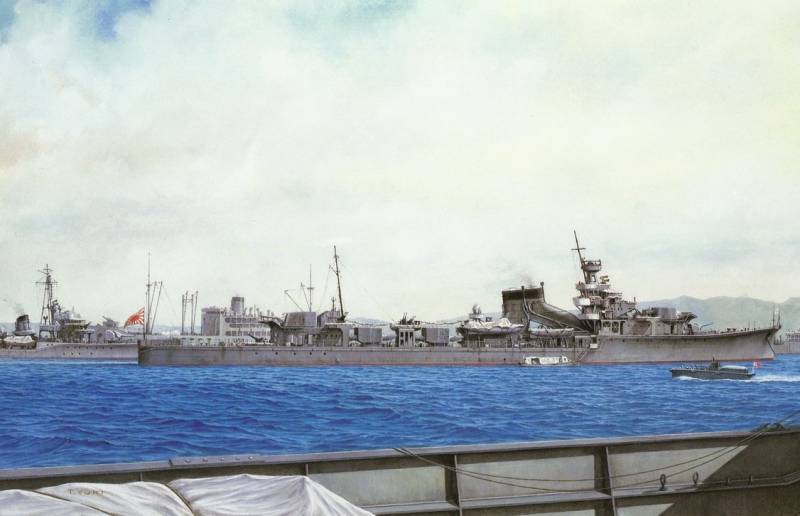
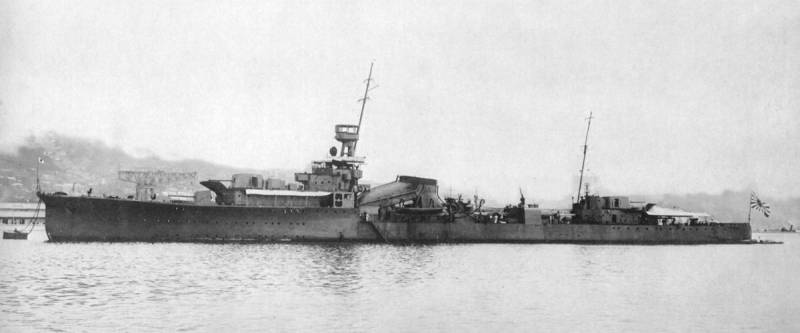
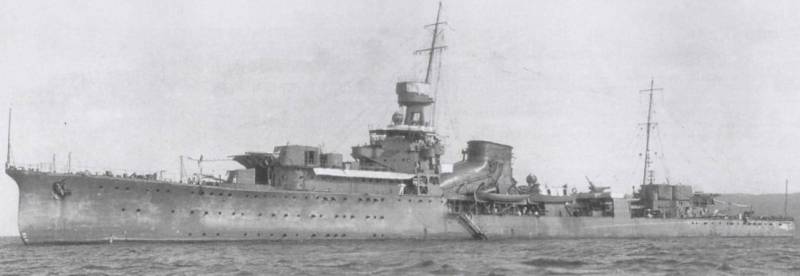
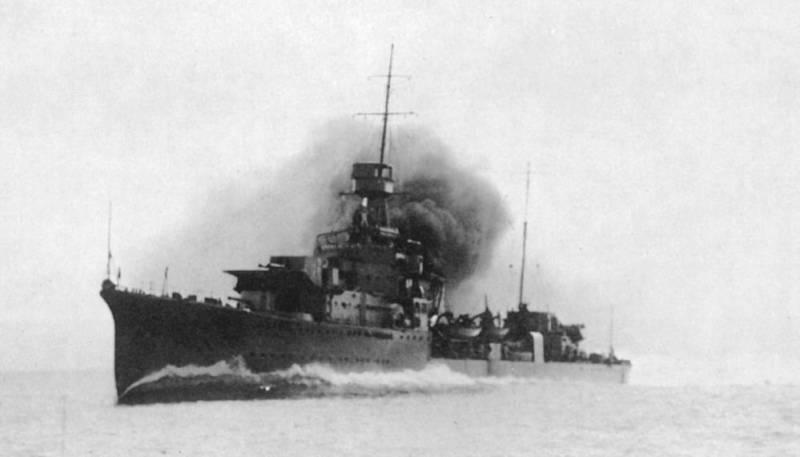
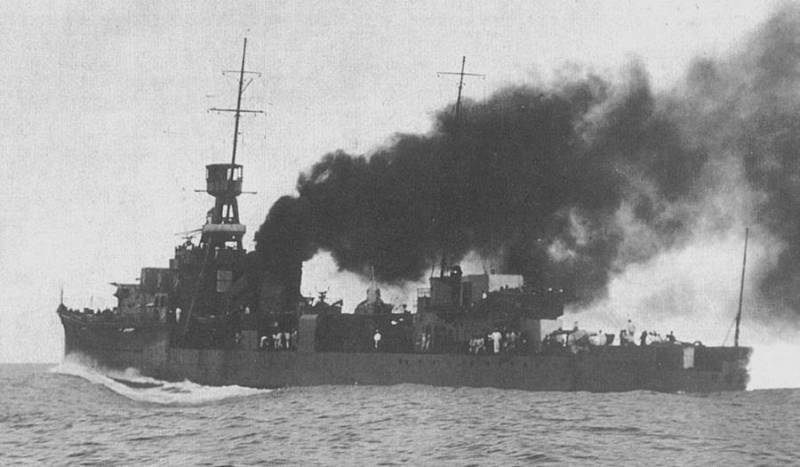
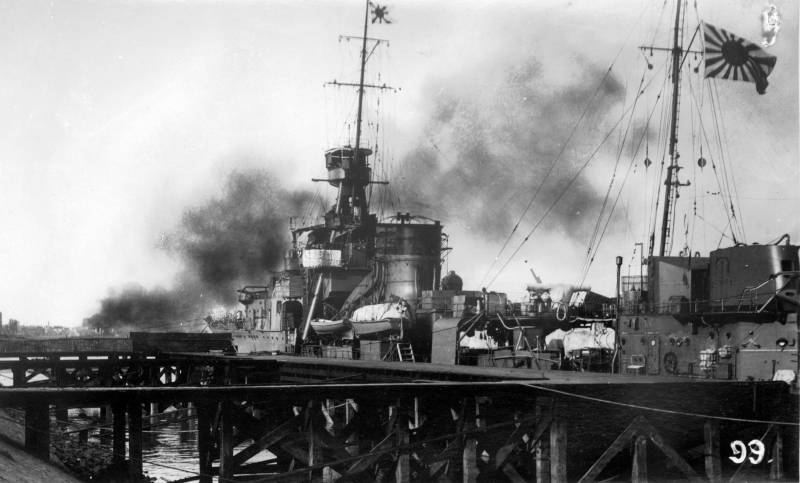
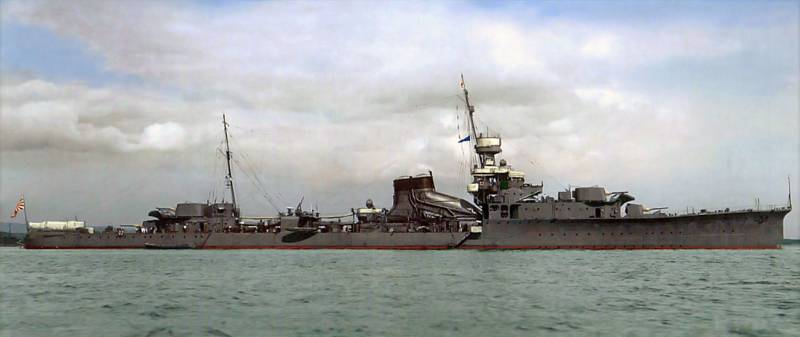
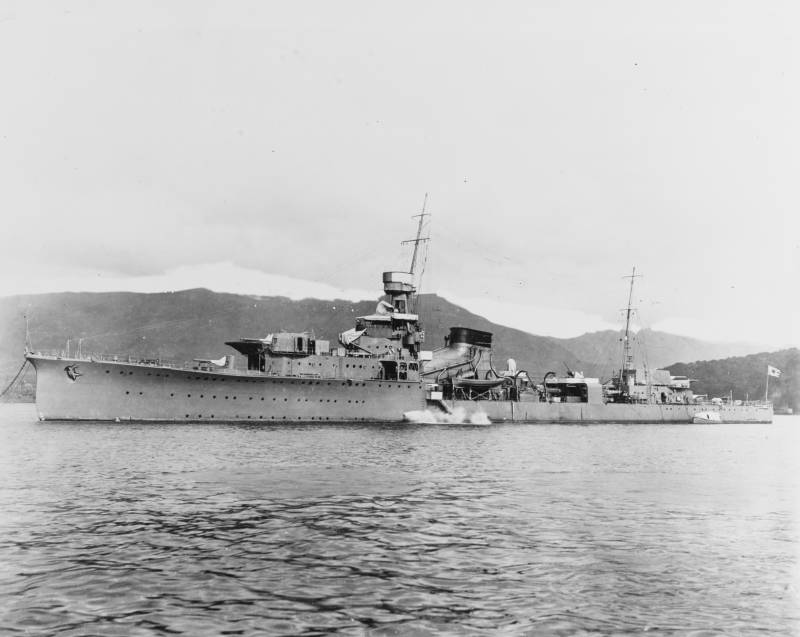
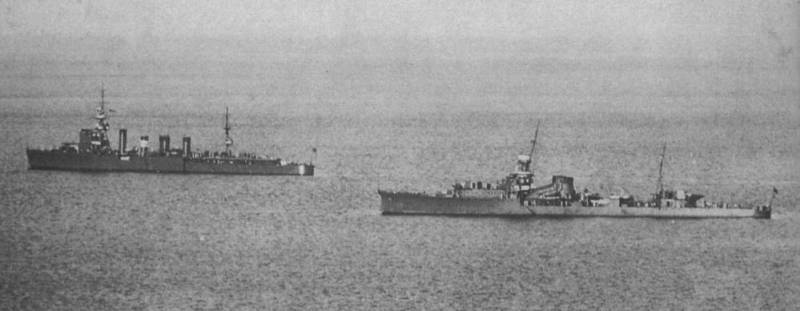
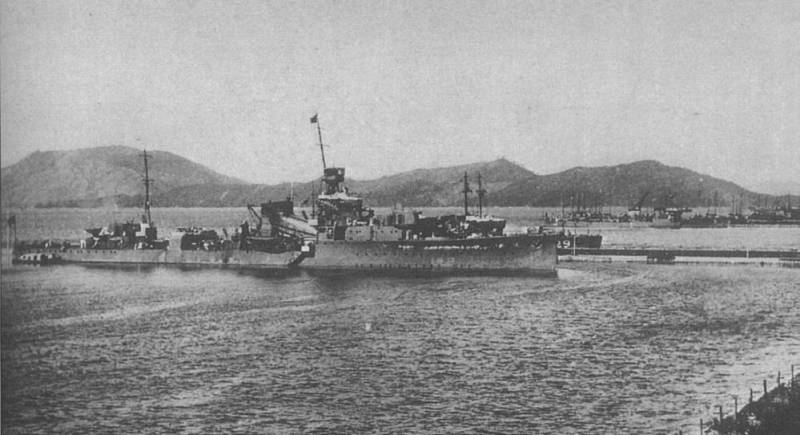
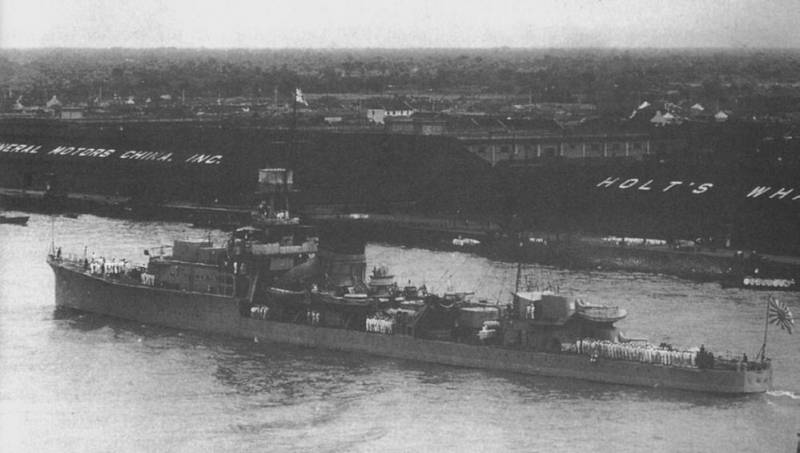
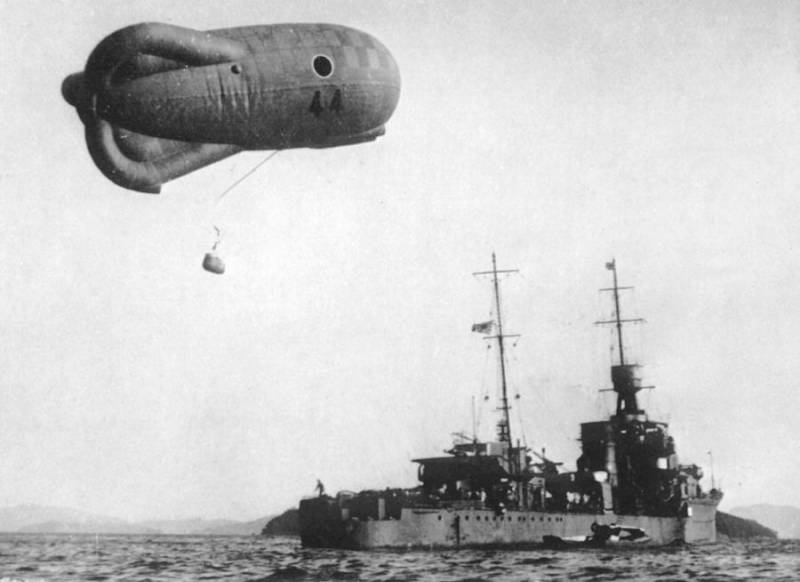
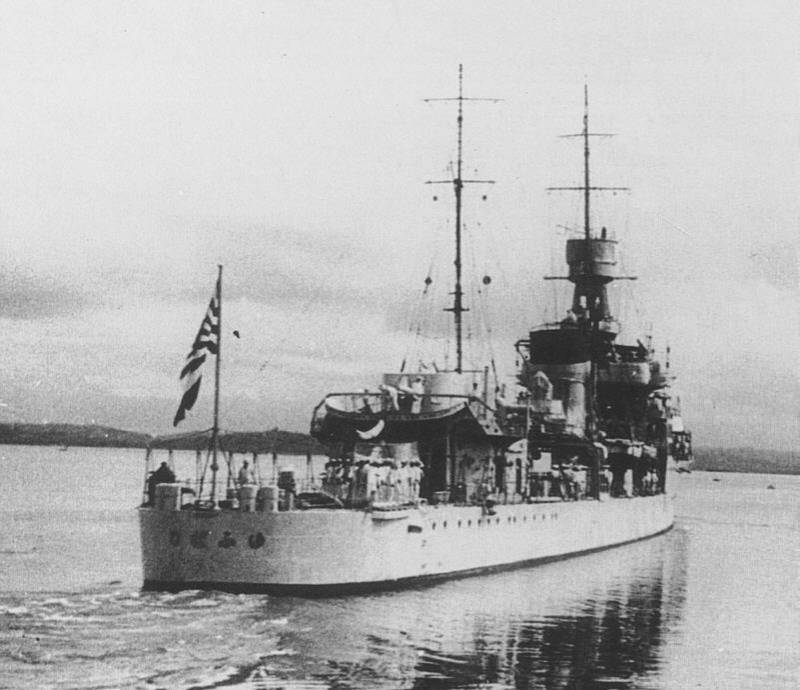
Information